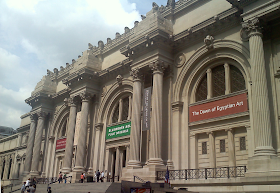 | |
|
We played in the same brass quintet at the University of Southern California while we pursued our Masters' degrees in performance. When we toured the US playing the show "Bugs Bunny on Broadway," he instigated discussions on the philosophy and meaning of Chuck Jones' 1955 Warner Brothers' cartoon, "One Froggy Evening," including the central question of whether Michigan J. Frog was consciously evil or merely had bad timing. And his exacting work as tonmeister for my CD of original music for brass quintet, Watercolor Menagerie, was essential to its success. Good times. Good guy.
Steve ponders things deeply, not that he makes it obvious. He's an easygoing Southern gentleman, of a refined Tennessee variety, and he goes through life with a light touch, a helping hand, and a cheerful smile. He has a terrific sense of humor. We've had many a good chin wag over the years.
He's also a composer of considerable depth and quality.
This blog announces the publication of Steve's "Mass for Brass Quintet." I find it to be profoundly intellectual, yet immediately appealing – highly satisfying to both player and listener. It is carefully based on centuries-old contrapuntal techniques, yet it is always fresh and interesting. It makes you think (or at least, it makes me think), which is an admirable achievement – one not universally attained by composers of concert music.
The work is in five movements: I. Compassio; II. Bellitat; III. Fides; IV. Sacer; and V. Ephemer. Its duration is about 25 minutes total. The work calls for two trumpets in B-flat, horn, trombone, and tuba (the tuba part may be performed on bass trombone). It is well scored and eminently playable by advanced players. He calls for mutes more often than many composers do – even requiring "practice" mutes, which are traditionally not intended for use in concert – and the sound world he achieves ranges from bold to ethereal. I have loved the work since I first heard and played it, and it is the first original composition other than my own works that I have published.
You can hear excerpts of the five movements of Steve's Mass for Brass Quintet on YouTube.
Please visit this page at the Premiere Press site for more information and to place an order.


